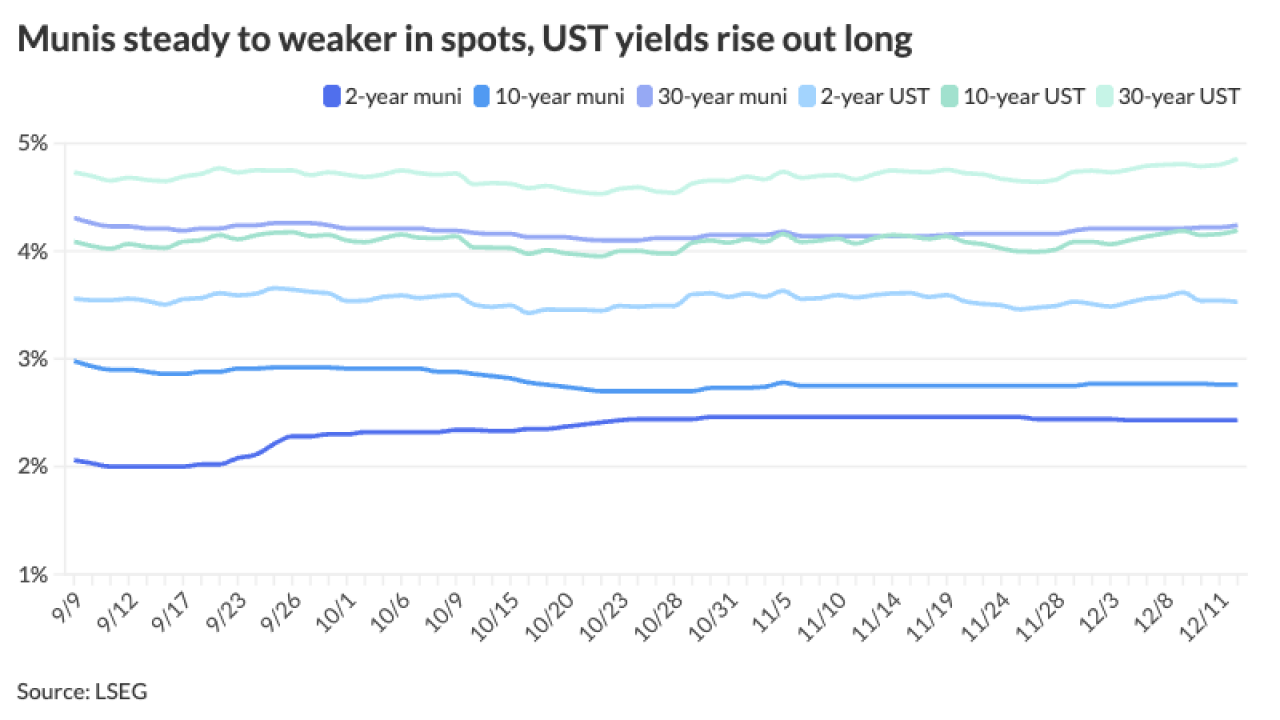
LOS ANGELES — A renewed interest in subdivisions that stalled during the recession is likely the main driver behind an increase in California Mello-Roos bond deals, according to a government consultant.
"Some of the subdivisions that were put on hold during the recession are gaining interest again and developers are looking for infrastructure funds," said Larry Kosmont, president and chief executive officer of Kosmont Companies, a development and government consulting firm.
Mello-Roos refunding volume more than doubled from fiscal year 2011-12 to 2012-13, to $1.3 billion from $633 million, while new money issuances declined by 6% from $385 million to $362 million, according to a California Debt and Investment Advisory Commission monthly
Riverside, San Diego, Sacramento, Los Angeles and San Francisco counties had the largest issuer volume in fiscal 2012-13; and San Diego, Orange, Riverside, San Joaquin and Los Angeles counties had the largest volume the previous year.
In 1982, the state legislature enacted the Community Facilities Act, more commonly known as Mello-Roos, in response to Proposition 13, a measure adopted in 1978 that capped property tax increases. Mello-Roos, an alternative method of funding infrastructure improvements and services by issuing land-based bonds paid for tax assessments, was named after its co-authors, Sen. Henry Mello, D-Watsonville, and Assemblyman Mike Roos, D-Los Angeles.
Kosmont said land-based bonds can trade at 300 or 400 basis points above Treasuries, so capturing interest-rate savings in a low-interest environment is also a draw.
Though sales for new homes have been more anemic than existing homes so far, there is still a shortage of new product in some markets, Kosmont said.
Existing home sales in the state rose 7.6% from September 2013 to September 2014, according to the California Association of Realtors.
Kosmont called the decrease in new money a glitch in the market. But he added that existing home sales did pick up first, while new home sales have experienced more of a soft take off.
New housing has become more enticing as existing home prices have ratcheted up, driving interest in revitalizing new housing subdivisions, he said. The Federal Housing Mortgage Association and Federal Home Loan Mortgage Corporation, government-sponsored enterprises that purchase home loans from banks, also have begun to loosen their credit criteria over the past several weeks.
The result is that new money issuance for Mello Roos projects might start to creep up for fiscal 2013-14, Kosmont said.
The total draw on reserve and default filings dropped by 33% from the previous year, according to CDIAC's Nov. 7 report, with five draws and three defaults reported in fiscal 2012-13. Palmdale Community Facilities District No. 93-1 and Lathrop CFD No. 2006-1 made multiple filings during the period. Palmdale CFD not only filed one draw on reserve, but also filed two default notices. The Lathrop CFD filed two default notices.
CDIAC's report was a preview summary of the annual data reported to CDIAC from all Mello-Roos financings. A more extensive report is anticipated over the next few weeks.





